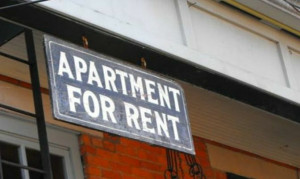Here are a few you should know about.
NO SMOKING ON GOVERNMENT PROPERTY
It is now against the law to smoke outside of 64 provincially-owned government properties including parking lots unless it explicitly states it is a designated area where you can smoke. The government is trying to protect Ontarians from the harmful effects of tobacco use and create an environment for those trying to quit.
A list of the prohibited properties that you cannot smoke at can be found here under the title Schedule 3 Province of Ontario Office Buildings:
https://www.ontario.ca/laws
PEDESTRIAN CROSSING
All drivers and cyclists are now required by law to wait until a pedestrian has reached the other side of street at a school crossing or pedestrian crossover. A pedestrian crossover is identified by specific signs, pavement markings and illuminated overhead lights and pedestrian push buttons. As for a school crossing, the law applies when a crossing guard is present. The law is not relevant for pedestrian crosswalks, which is generally a location found at intersections with traffic signals, pedestrian signals or stop signs. If you are caught disobeying this law, you will face a fine between $150 to $500 and three demerit points.
REDUCTION IN AUTO INSURANCE
The government now requires insurance companies to give discounts for winter tires. However, the exact percentage of the discount has not yet been mandated. Consultations are in progress and there will be a consensus at some point on the exact rate. But, a discount is required right now. Several insurance companies already give discounts for winter tires and that ranges from 3% to 5%.
INCOME TAXES
The federal government is lowering the tax rate for the second income tax bracket which affects Canadians earning between $45,282 - $90,563 from 22% to 20.5%. At the same time, the federal government also introduced a new tax bracket for individuals whose taxable personal income exceeds $200,000 per year. Income over that amount will now be taxed at a rate of 33%, which is up from 29%
RENT INCREASES
Residential landlords will be permitted to increase rent across Ontario by a maximum of 2%. The rate is applicable to rental agreements signed between January 1, 2016 and December 31, 2016. The guideline is set annually based on the Ontario Consumer Price Index.
The allowance of rental increases is not applicable however to vacant residential units, residential units first occupied on or after November 1, 1991, social housing units, nursing homes or commercial property.
In most cases, the rent for a unit can be increased when 12 months have passed since a tenant either first moved in or since the last rent increase. A tenant must be given written notice of the rent increase at least 90 days before the rent increase is to take effect.
To illustrate how it works, consider that the monthly rent for your apartment is $1,000 beginning September 1, 2015. With proper written 90 day notice to the tenant, the landlord could lawfully increase the rent 12 months later on September 1, 2016. Assuming the landlord wishes to increase the rent by 2%, the maximum allowed by the law, then your new rent would be $1,020.00 commencing September 1, 2016.
Again, the landlord is not required to increase the rent and they may not increase it. But, if they do the maximum they can do it at is 2% per the law.
REDUCTION IN ELECTRICITY BILLS AND INCREASE IN HYDRO BILLS
The Debt Retirement Charge (DRC) cost will be removed from residential users’ electricity bills, saving a typical user about $70 per year. Unfortunately, the 10% discount called the Ontario Clean Energy Benefit will also be disappearing. These two cancellations do not offset one another, as a result you may end up paying more.
TAX FREE SAVINGS ACCOUNT
The federal limit for tax-free savings accounts will drop to $5,500 from $10,000. Future increases will be indexed to inflation using the Consumer Price Index, rounded to the nearest $500.
STUDENT LOANS
The Canada Student Loan Program will no longer cut support to working students for ever dollar they earn over $100 per week.
EMPLOYMENT INSURANCE
The maximum insurable earnings will increase from $49,500 to $50,800. According, this means the maximum weekly E.I. benefit rate will go up from $524 to $537 per week. However, the premium rate, the money that comes off your paycheque will stay the same at $1.88 per $100 of insurable earnings.
INJURED WORKERS
Workers who receive partial disability benefits from Workplace Safety Insurance Board will see their benefits rise 0.5% on the way to being indexed to inflation in 2018.
Hope that you have a prosperous new year!










